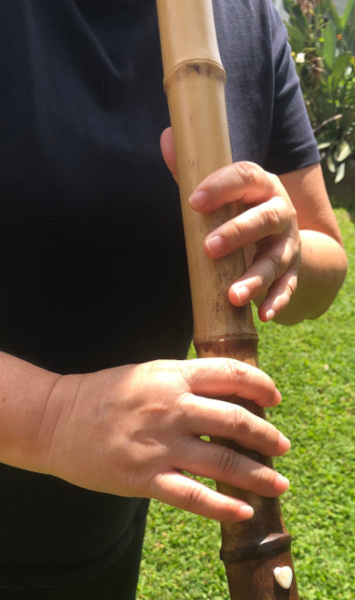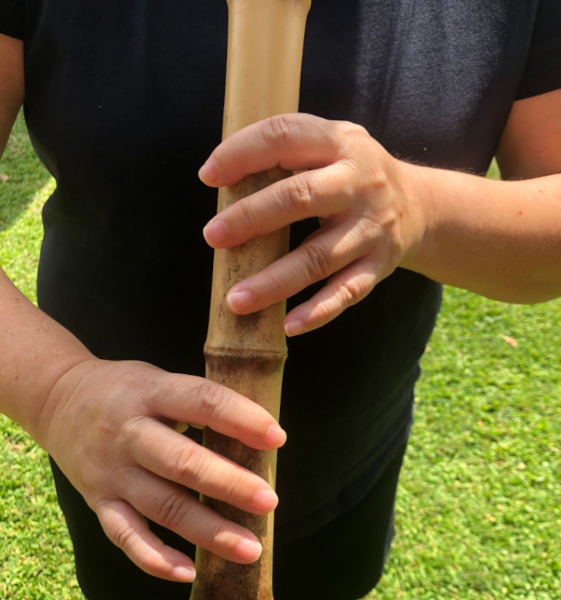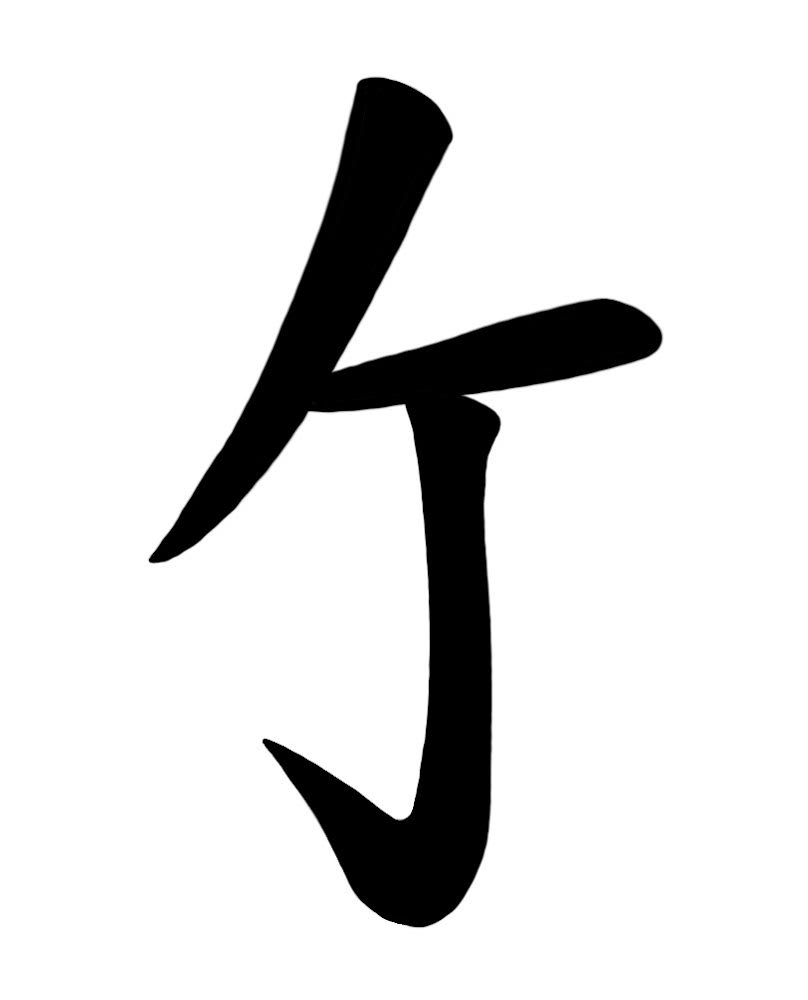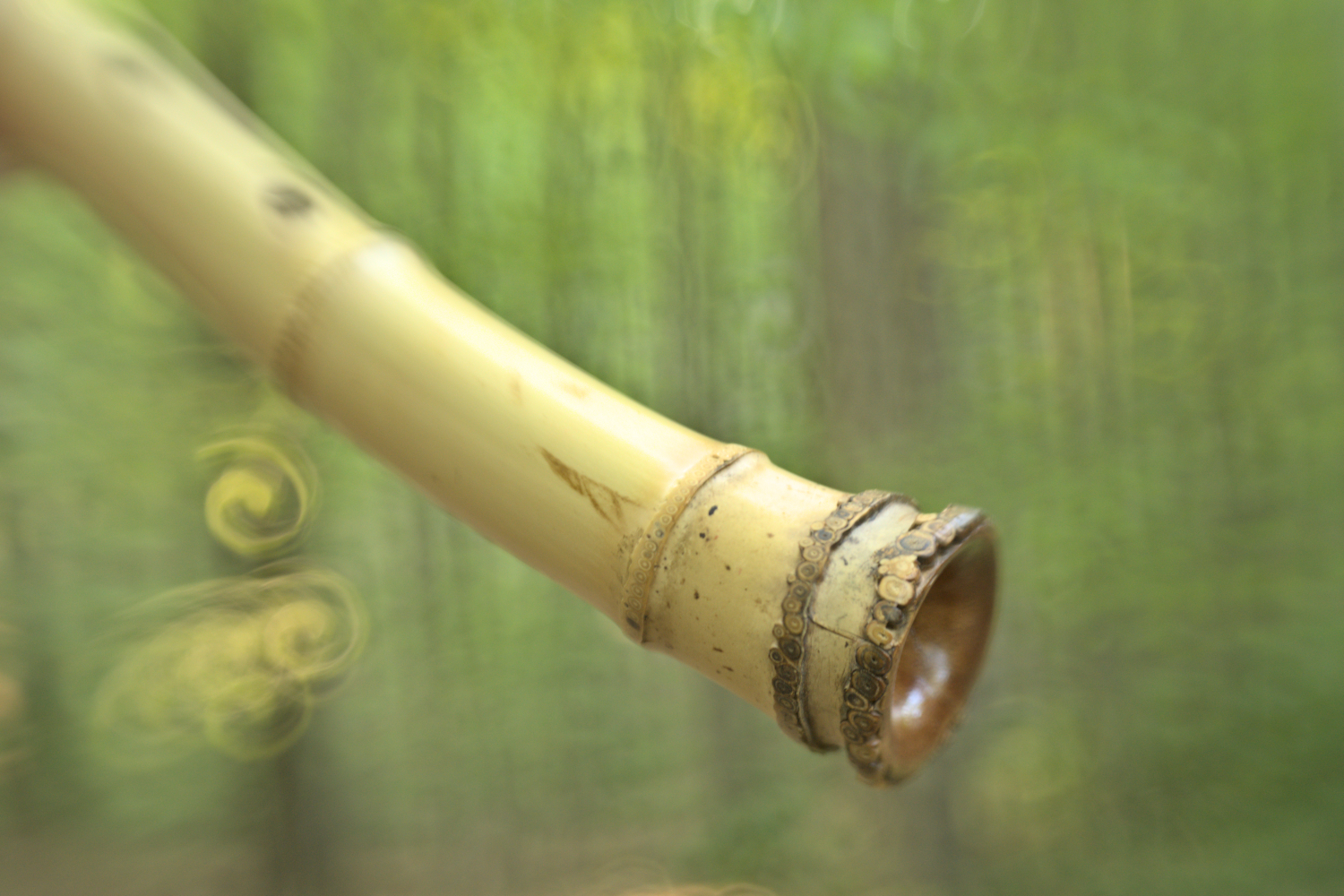Small Hands and Holding the Shakuhachi
The 1.8 shaku (key of D) is considered the standard shakuhachi length. This means the majority of instructional materials and teachers focus on this size. While individuals with smaller hands might assume a shorter instrument is easier, smaller shakuhachi are actually more challenging to play. They require more precise embouchure control to reach the higher notes of Kan (second register).
The truth is, very few adults genuinely cannot manage a standard 1.8 shakuhachi when using proper form. After reviewing this guide, you’ll be well-equipped to play comfortably.
Proper Technique for Smaller Hands: An Example
Pictured below is my student, who demonstrates excellent technique holding a 1.8 shaku shakuhachi, despite her very small hands.
Observe these key points in her posture and grip:
- Natural Finger Position: Her fingers are natural and straight, not arched or contorted. Her wrists remain neutral, thanks to her arms being slightly flared out.
- Ergonomic Finger Placement: She covers some holes not with the fingertips, but further down the finger for improved ergonomics and coverage.
- Free Pinky Fingers: Note that her pinky fingers are kept up and free, not curled underneath the shakuhachi. Curling the pinkies restricts good meri (half-holing) technique and general finger movement. People often incorrectly curl their pinkies under the shakuhachi in an attempt to steady or support the instrument. With proper posture and form, this unnatural and cumbersome use of the pinky fingers is entirely unnecessary.




